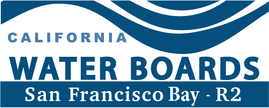Suisun Marsh TMDL
The Suisun Marsh TMDLs for dissolved oxygen (DO) and mercury (Hg) are fully approved and effective.
Background
Suisun Marsh encompasses over 100,000 acres of tidal marshes, diked managed marshes, small and large tidal sloughs, and natural uplands which support resident and migratory shorebirds and waterfowl, and provide habitats for threatened and endangered species. Over the past century, the marsh has been extensively managed, including land use change, channelization of sloughs, altered freshwater delivery, and creation of managed wetlands, which all affect water quality. |
|
Suisun Marsh has been on the 303(d) list of impaired waterbodies for low DO and Hg since 1992. Slow-flowing, low-mixing, back-end sloughs in the western portion of the marsh are specifically prone to low DO due to a mixture of natural and anthropogenic factors. Operations at managed wetlands generate organic-rich nearly hypoxic discharges resulting in significant DO depletion in the back-end sloughs. The prolonged periods of flooding and drying at managed wetlands, together with a buildup of organic carbon in the soils, also accelerate mercury transformations and enhance methylmercury production. |
 |
We evaluated how discharges from managed wetlands affect water quality and developed DO objectives specific to marsh sloughs and channels. These DO objectives protect sensitive fish, including their survival, growth, reproduction, and behavioral changes, and consider spatial and temporal variability of DO in the marsh. Our DO TMDL and the implementation plan are designed to ensure attainment of the new DO water quality objectives. The TMDL’s action plan is implemented through a 401 Water Quality certification, which requires BMPs to control conditions leading to low oxygen concentrations and monitoring of DO. The BMPs include staggering discharges from managed wetlands, clearing internal ditches to improve circulation, and mechanically removing broadleaf vegetation to reduce the amount of organic matter available for decomposition. Actions to implement the Suisun Marsh TMDL and improve DO are also expected to reduce methylmercury production. Testing and deployment of BMPs conducted in parallel with development of the TMDL (2013-2017) showed improvement in DO concentrations and decrease in magnitude and length of low DO events. |
|
TMDL Approval Process
|
For more information contact: Barbara Baginska Engineering Geologist San Francisco Bay Regional Water Quality Control Board 1515 Clay Street, Suite 1400 Oakland, CA 94612 Phone: 510-622-2474 Fax: 510-622-2460 E-mail: BBaginska@waterboards.ca.gov |



